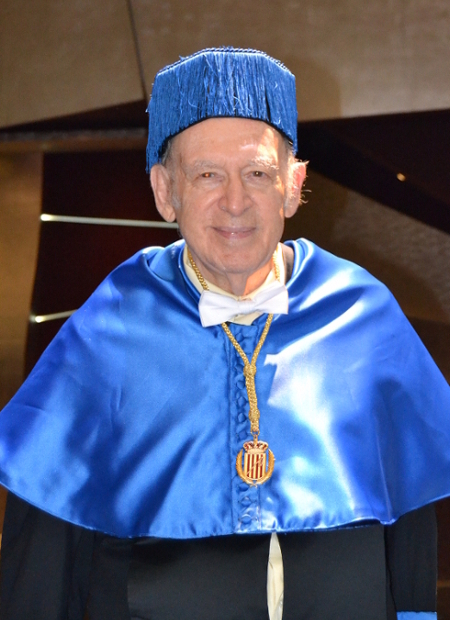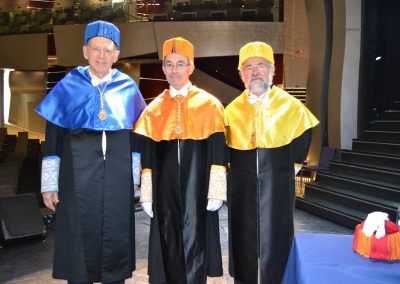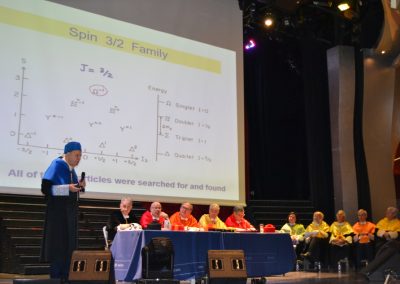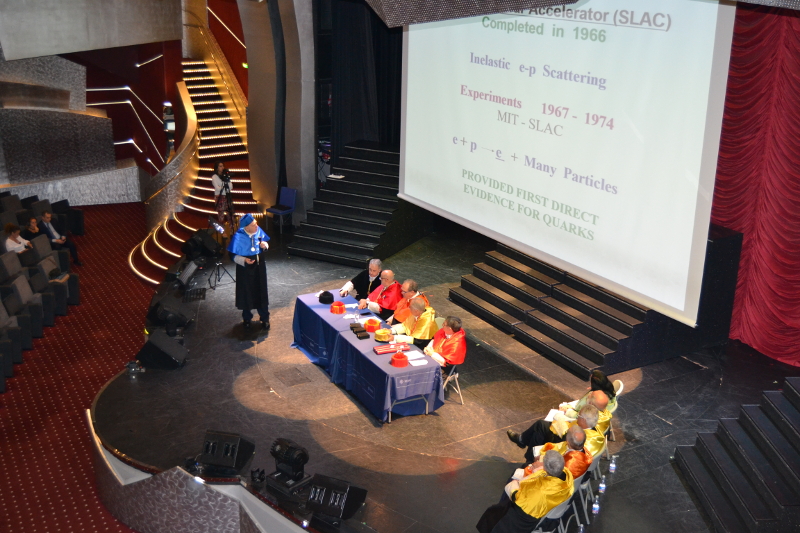Honorary Academician
Experimental Sciences: Doctor in Physics
Date of admission: July 17, 2017
Admission speech: “Are we really made of quarks?”
Nobel Prize in Physics 1990: He was awarded the Nobel Prize for his research on the structure of atomic nuclei. Specifically, he co-discovered experimentally the evidence of quarks.
Dr. JEROME ISAAC FRIEDMAN
- Born in Chicago, 1930.
UNIVERSITY EDUCATION
- Bachelor’s Degree in Physics from the University of Chicago, 1953.
- Ph.D. in Physics from the University of Chicago, 1956.
TEACHING AND PROFESSIONAL ACTIVITY
- A key figure in the development of the Standard Model of Particle Physics.
- His experimental work revolutionised the understanding of the structure of matter and remains a cornerstone of modern physics.
- Research Associate at Stanford University (1957), collaborating at the Stanford Linear Accelerator Center (SLAC).
- Professor at the Massachusetts Institute of Technology (MIT) since 1960.
- Full Professor at MIT since 1967.
- Director of the MIT Laboratory for Nuclear Science (1980).
- Head of the MIT Department of Physics (1983–1988).
- Vice President of MIT for three years.
- Early research in nuclear emulsions under the supervision of Professor Telegdi.
- Collaborated with Henry Kendall and Richard Taylor at SLAC in deep inelastic scattering experiments.
- His experiments between 1967 and 1973 confirmed the existence of quarks, a theory proposed by Murray Gell-Mann and George Zweig.
AWARDS AND HONOURS
- Nobel Prize in Physics (1990), together with Henry W. Kendall and Richard E. Taylor, for their investigations into the structure of atomic nuclei and the role of quarks in particle physics.




